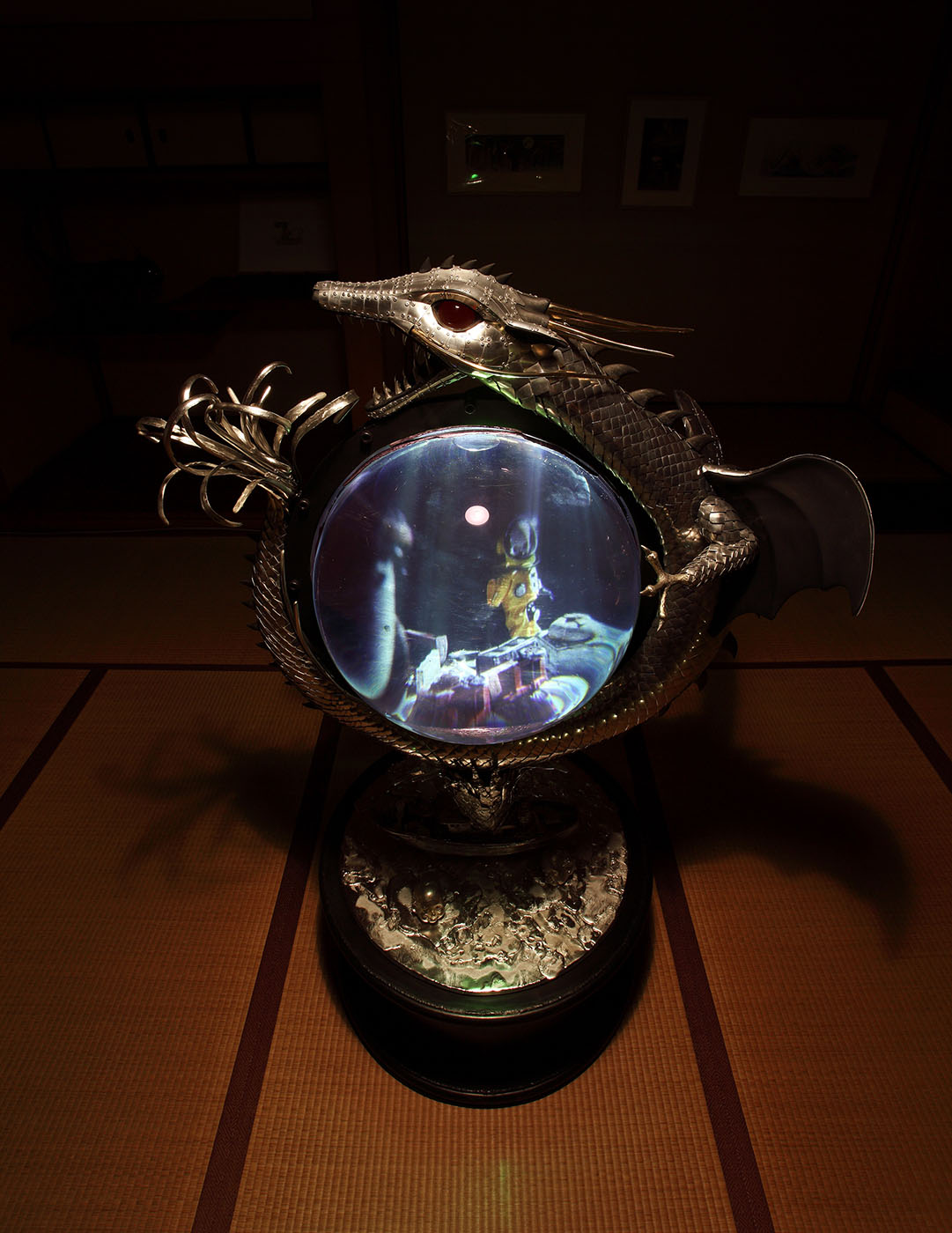PHANTASMAGORIA [2010]
“Dragon” and “Tiger” in a Mansion
Phantasmagoria is a form of theatrical entertainment which became popular in France at the end of 18th century. It is performed with a magic lantern, a visual device before photography and cinema. Kenji Yanobe made Phantasmagoria for the exhibition The Great Adventure of Torayan in 2007. It was a magic lantern shaped as a chandelier with openwork and the story of picture book Torayan’s Great Adventure was projected through the lantern. Yanobe had an exhibition Gento Yakai (Phantasmagoria) at Yurinso, an annex building of Ohara Museum of Art in 2010. 2010 was the anniversary year to commemorate 80 years of establishing of Ohara Museum of Art, the first private museum dedicated to western art and also the 130th birthday of the founder, Magosaburo Ohara.
Yurinso is an annex of the principal residence of Magosaburo Ohara, and now open to public only in spring and autumn every year. It was the first time for Yanobe to have an exhibition in a residential space. In contrast with Suito Osaka–Aqua Metropolis Osaka–2009, in which he installed his works throughout the city of Osaka, the exhibition was small in scale, but he used the common technique of installation based on the stories.
In this exhibition, the works and figurinse which became the models for picture book Torayan’s Great Adventure and The World of Torayan: The Story of Lucky Dragon were installed and the world of stories were unfolded in the building. Yurinso is a residence which combines Western and Japanese styles of architecture and has various rooms with purposes. The visitors enjoyed the installation as if they entered the world of Role Playing Game (RPG).
As Magosaburo Ohara was born in the year of dragon, designs of dragon are seen every where in the building. The design was directed by Torajiro Kojima, who collected art works for the museum. In this exhibition, Yanobe featured Torayan and Lucky Dragon as main characters and also had an intention to revive “Dragon” and “ Tiger (Tora)” which had been resided in the building. Another hidden theme for this exhibition was Juji Ishii, a missionary who dedicated for the activities of relieving of or handed children, had an influence on Ohara’s activities. Ishii organized the events of phantasmagoria for charity purposes.
Yanobe’s installation, in the same way as the achievements of Ohara, Kojima and Ishii, never stayed silently in the building. Torayan, Cat Lantern and Lucky Dragon stack out their heads from the window on the second floor. Tourists hanging around the area, famous for its scenic beauty were stunned and surprised by their appearance. Yanobe’s works were seen from outside, combined with the view of Yurinso. The view was a merge of reality and fantasy, which is typical of Yanobe’s works, and also successfully made visible the hidden character of Yurinso.
It is noteworthy that The Ruin of Future, a work which marked his starting point was installed as a new work in the exhibition. The work reproduced the interior scene of nursery school in Chernobyl, where wrecked girl dolls were discarded in the ruin. Yanobe showed the process of his own revival through the installation. The new work Phantasmagoria-Yurinso is a sculpture of dragon holding a ball of glass, which looks like a crystal ball. Onto the ball he projected a short movie. In the movie, Yanobe in Atom Suit picks up a girl doll in Chernobyl and quietly stands up. He begins to run and reincarnates into Torayan. The exhibition at Yurinso, the memory of the building and the story Yanobe created from his memory were combined and performed as a phantasmagoria.
